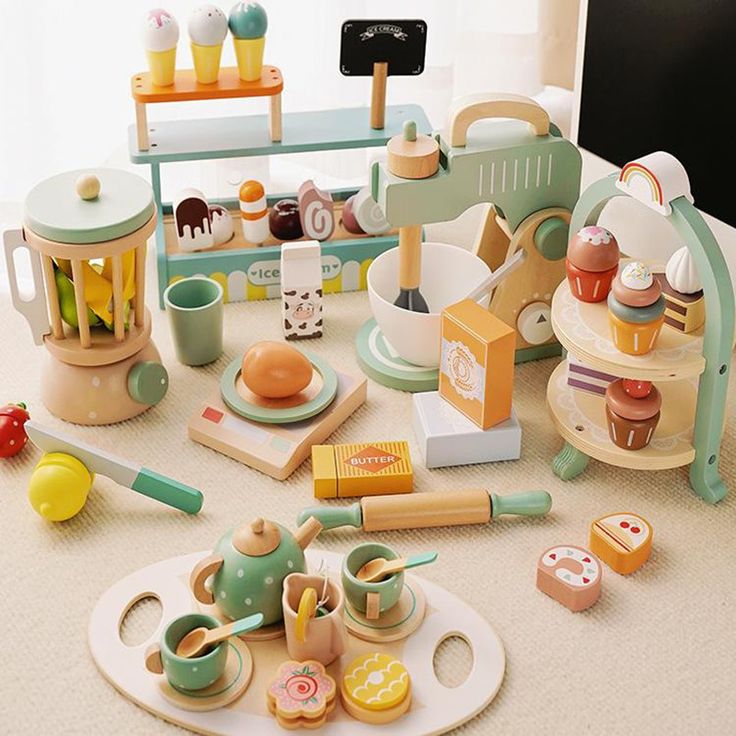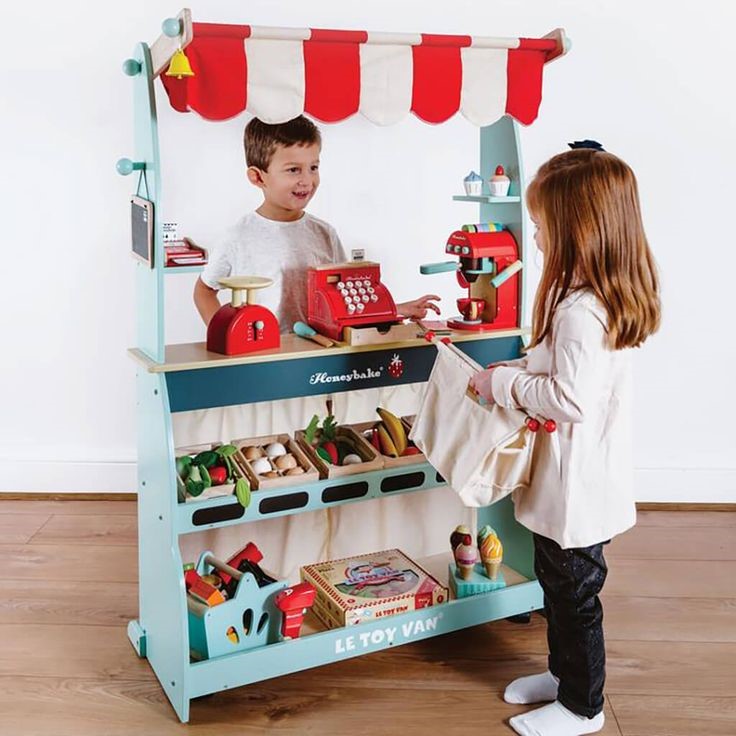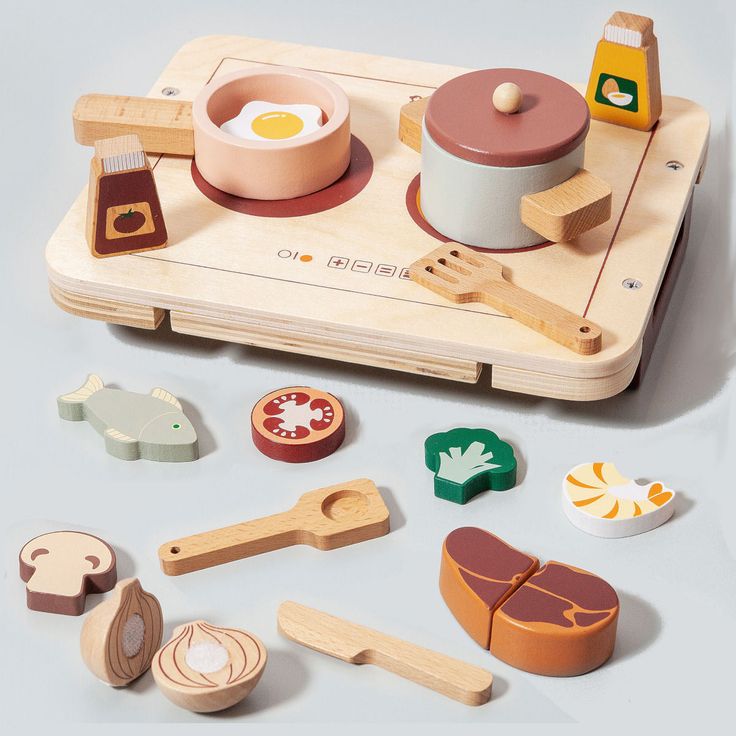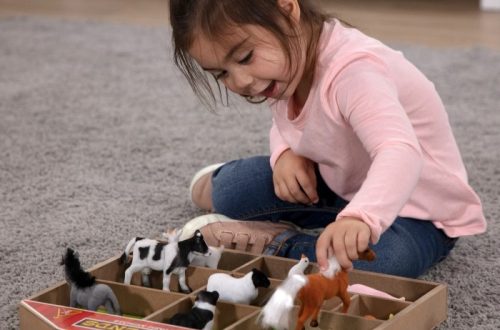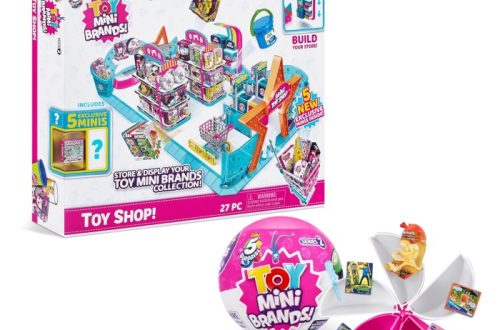Introduction
A pretend play kitchen is more than just a toy; it’s a gateway to imagination and creativity for young children. These kitchens allow kids to immerse themselves in role-playing scenarios where they can cook, serve, and share meals. The experience is not only entertaining but also educational, helping children develop essential skills while having fun. In this article, we will explore various creative uses for a pretend play kitchen that can enhance playtime and contribute to a child’s development.

From hosting imaginative dinner parties to encouraging collaborative play, this guide highlights the transformative power of a pretend play kitchen. By understanding its potential, parents can facilitate more engaging play experiences that enrich their child’s developmental journey.
The Importance of Imaginative Play
Imaginative play is crucial for child development. It involves children using their creativity to invent scenarios, roles, and stories, which encourages self-expression and cognitive development. In a pretend play kitchen, children can:
- Role Play Different Characters: They can take on various roles, such as a chef, a restaurant owner, or a customer. This role play fosters creativity and helps children understand different perspectives.
- Exercise Problem-Solving Skills: While navigating imaginative scenarios, children encounter situations that require problem-solving. Whether deciding what to cook or how to serve guests, these decisions enhance critical thinking.
- Enhance Language and Communication: As children engage in dialogue while pretending to cook or serve, they naturally develop their language skills. They learn to articulate their thoughts and desires effectively.
- Build Social Skills: When playtime involves multiple children, they practice cooperation, sharing, and negotiation. These social interactions are fundamental to building friendships and understanding social dynamics.
Creative Uses
One of the most creative uses for a pretend play kitchen is hosting imaginative dinner parties:
Planning the Menu
- Getting Creative with Dish Selection: Children can engage their creativity by pretending to plan a menu for their restaurant or kitchen. They can choose from various “dishes” to prepare, such as pasta, pizza, salads, or desserts. This activity ignites their imagination and allows them to express personal preferences.
- Exploring Different Food Types: As they create their menus, children will think about different food categories, such as fruits, vegetables, proteins, and grains. This exploration encourages them to recognize both familiar and new ingredients, fostering a broader understanding of nutrition.
- Understanding Meal Preparation: The planning process encourages children to consider how various dishes are prepared. They might discuss what ingredients are needed and what cooking methods will be used, such as baking, boiling, or frying. This insight helps them appreciate the effort involved in meal prep and cooking.
- Healthy Choices: Parents can introduce discussions about healthy eating habits during the planning phase. Encouraging children to incorporate fruits and vegetables into their menus promotes awareness of nutritious options from an early age.
Inviting Friends
- Collaborative Meal Preparation: Children can enhance their pretend play by inviting friends to join in the fun. Collaborating on preparing meals allows kids to take part in teamwork, sharing responsibilities as they cook together.
- Role Assignments: During group play, children can take turns fulfilling different roles, such as chef, sous-chef, or customer. This role-playing introduces varied interactions and allows children to experience different perspectives during play.
- Enhancing Communication Skills: Working together as a team naturally encourages children to communicate with one another. They will need to share ideas, make decisions, and discuss cooking processes, which helps build their social skills.
- Shared Experiences: Involving friends in the play creates shared memories and experiences. These interactions are valuable for their social development as they navigate friendships, cooperation, and problem-solving.
Setting the Table
- Creating the Dining Experience: As part of their pretend play, encourage children to set the table using toy dishes, cups, and cutlery. This activity teaches them about the importance of presentation and organization during mealtime.
- Learning Table Etiquette: While setting the table, discussions about dining etiquette can be introduced. Children can learn about placing utensils correctly, using napkins, and the importance of waiting for everyone to be seated before beginning to eat.
- Fostering Responsibility: Assigning the task of setting the table teaches children responsibility and ownership over their play environment. They learn that preparation is crucial for the enjoyment of a meal, whether real or imaginary.
- Aesthetics and Design: Encourage children to think creatively about how to make the table visually appealing. They can arrange dishes artistically, add decorations like flowers or colorful placemats, and consider the ambiance they want to create.
Acting Out Scenarios
- Simulating a Real Dining Experience: As children serve their meals, they can act out various dining scenarios that mimic real-life experiences. They can create dialogues between server and guest, practicing conversational skills in a fun, stress-free setting.
- Practicing Polite Language: During their pretend dining experience, children can practice using polite phrases and courteous language. Saying “please” and “thank you” during interactions enhances their understanding of social etiquette and respect.
- Role-Playing Social Interactions: Acting out different scenarios, such as dining at a restaurant or hosting a dinner party, allows children to experiment with social interactions. They can navigate conversations, ask questions, and express their preferences, honing their communication skills.
- Reflecting on Experiences: After the meal, encourage children to discuss their experience. They can share what they enjoyed about the pretend meal, express gratitude, and share their thoughts about how it went. This reflection deepens their understanding of social dynamics and builds confidence in their social skills.
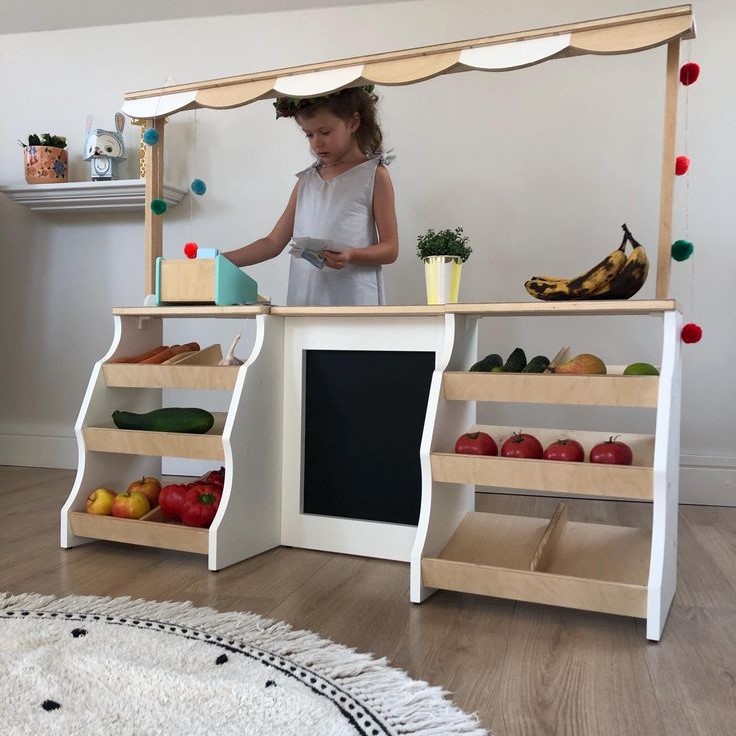
By engaging in these activities, children can gain a richer experience through imaginative play in their pretend play kitchen. Each aspect—from planning the menu and inviting friends to setting the table and acting out scenarios—promotes essential skills, nurtures creativity, and enhances social interactions, all while having tons of fun!
Encouraging Collaborative Play
A pretend play kitchen offers ample opportunities for collaborative play, which is vital for developing teamwork:
- Team Cooking: Assign different roles to each child, such as the head chef, sous-chef, and waiter. Each role contributes to the cooking process, teaching kids the importance of working together.
- Cooking Challenges: Create fun cooking challenges where children must work together to create a dish using the pretend kitchen. This activity fosters creativity and encourages them to communicate effectively.
- Sharing Responsibilities: Encourage children to share responsibilities while preparing meals. Communicating their needs and preferences builds negotiation skills and reinforces the importance of collaboration.
- Storytelling Through Cooking: Children can create stories around their dinner parties. This imaginative storytelling enhances creativity and facilitates language development.
Promoting Educational Themes
Utilizing a pretend play kitchen can also provide educational value, making learning enjoyable:
- Learning About Nutrition: Parents can guide children in learning about healthy eating. Discussing the nutritional value of different food types during pretend cooking promotes awareness about balanced diets.
- Imaginative Math Practice: Engage children in math-related activities while they cook. For instance, they can measure out “ingredients,” helping them grasp basic math concepts like counting and fractions.
- Cultural Exploration: Introduce children to recipes from different cultures during play. Understanding various cuisines fosters appreciation for diversity and broadens their worldviews.
- Science in Cooking: Use cooking as a platform to explore basic scientific concepts, such as how heat changes food or the process of baking. This experiential learning can ignite curiosity and deepen understanding.
Enhancing Creativity in Children
A pretend play kitchen is an ideal platform to foster creativity in children:
- Imaginative Scenarios: Encourage your child to create unique scenarios each time they play. They can be anything from a cozy café to a bustling restaurant, enhancing their imaginative capacities.
- Artistic Presentation: Allow children to use art supplies to create menus or decorate their pretend kitchen. This hands-on activity enables self-expression and sparks creativity.
- Inventing New Recipes: Motivate kids to “invent” their own dishes. This imaginative play encourages original thinking and showcases their creativity.
- Using Technology: Incorporating digital resources, such as cooking tutorials or videos related to food, can further enhance their play experience and broaden their learning.
Creating a Safe Space for Creative Play
To maximize the benefits of a pretend play kitchen, creating a safe and inviting play environment is crucial:
- Designating a Play Area: Set up a specific area for the pretend play kitchen. This space should be free from distractions and allow children to immerse themselves in their imaginative worlds.
- Organizing Toys and Accessories: Ensure that the kitchen and its accessories are organized for easy access. A well-arranged area promotes autonomy and encourages children to engage in creative play independently.
- Safe and Inviting Decor: Decorate the play space with colorful and fun elements. Soft furnishings, bright colors, and child-friendly designs enhance the inviting atmosphere and stimulate play.
- Encouraging Independence: Allow children to manage their play environment, fostering a sense of ownership. When they feel empowered to take charge, it enhances engagement and creativity.
The Role of Parents in Play
As a parent, you can significantly influence your child’s play experiences with a pretend play kitchen:
- Active Participation: While allowing independence is essential, actively participating in their pretend play can offer guidance and introduce new storylines or ideas.
- Encouraging Reflection: After playtime, discuss what happened. Reflecting on their experiences reinforces learning and social dynamics, allowing children to express their thoughts and feelings.
- Praise and Reinforcement: Provide positive reinforcement to encourage your child’s creativity and social interactions. Praise their imaginative ideas, and support their decisions during play to strengthen their confidence.
- Setting Goals for Play: Propose goals, such as preparing a specific dish or hosting a themed dinner party. Setting objectives can enhance the play experience while teaching kids the significance of planning and execution.
Conclusion
In conclusion, a pretend play kitchen is a multifaceted tool that can significantly enhance playtime experiences for children. By facilitating creative uses of this toy, parents can foster imagination, collaboration, and educational themes that contribute to overall development.
Encouraging group playdates, promoting teamwork, integrating learning, and creating a supportive environment all play vital roles in maximizing the potential of pretend play kitchens. By embracing the transformative power of pretend play, we can equip children with essential social skills, creativity, and confidence that will serve them throughout their lives. Embrace the magic of play and watch your child thrive in their culinary adventures!
